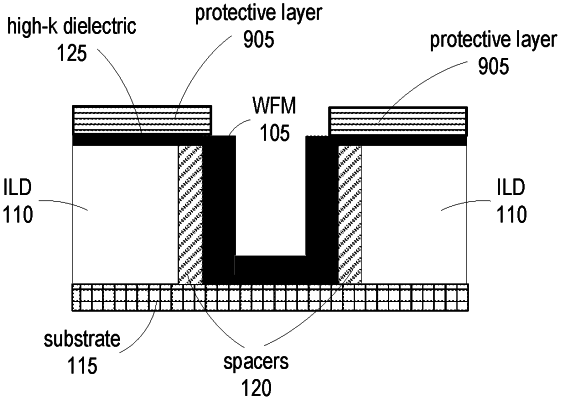| CPC H01L 21/28247 (2013.01) [H01L 21/28158 (2013.01); H01L 29/517 (2013.01)] | 17 Claims |

|
1. An apparatus, comprising:
an interlayer dielectric layer formed on a substrate;
a first protective layer that covers:
a top portion associated with the interlayer dielectric layer, and
a trench region formed within the interlayer dielectric layer situated above the substrate;
a metal liner coating the first protective layer covering the trench region; and
a second protective layer resistant to anisotropic metal etching and selective to the first protective layer so that the second protective layer is formed, due to selectivity of the second protective layer, on the first protective layer covering the top portion and is not formed, due to the selectivity of the second protective layer, on the metal liner, wherein the second protective layer maintains interlayer dielectric layer oxide loss below a threshold and prevents blockage of source-drain contact etching during the anisotropic metal etching, wherein the first protective layer comprises hafnium dioxide, and wherein the second protective layer is formed via selective deposition of a self-assembled monolayer comprising phosphonic acid terminated groups that bind to the hafnium dioxide.
|